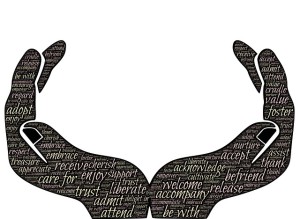While it might feel as though the semester has just begun, finals are quickly approaching, and for a Penn State alum like myself, that only means one thing: THON weekend will be here faster than we know it.
Over six hundred organizations participate in a year-long fundraising effort to help bring awareness to and find a cure for childhood cancer. Past years have brought in record-breaking funds, and this year is slated to bring in major donations to aid Four Diamonds, the Hersey Medical Center, and the children affected by childhood cancer as well as their families.
Greek life at Penn State is heavily involved in the year-long fundraising efforts, as well create a large presence at the culminating dance marathon. This year, junior Carly Racanelli, who is a member of Kappa Alpha Theta fraternity is using her own business, Forever Young Bracelets, affiliated with her family’s foundation, The Michael Racanelli Forever Young Foundation, to donated 50% of their November proceeds to Penn State’s THON efforts.
Five years ago the Racanelli family lost a son and a brother, and community lost a loving friend. Hoping to spread her late brothers inherent peace and mindfulness, the Racanelli family established a lacrosse scholarship with his name, have sponsored mission trips, and contributes to organizations like Mission Be, which teaches mindfulness to school children.
“He lived his life to the fullest and had such a genuine and pure soul,” said Carly of her brother Michael.
During the summer of 2015, Carly and her younger sister were exploring ways to expand The Michael Racanelli Forever Young Foundation, and together came up with the idea to make bracelets in which a portion of the proceeds would go to the foundation. “I wanted to get creative and find a way to continue to spread his peace and get involve din something bigger than myself,” she said.
In an interview given to The Odyssey Online, Carly explained that “after experiencing THON my freshman year at PSU, it was always something I was extremely impressed by and proud of. Anyone that attends THON knows what I’m talking about because it is such a moving and emotional experience that has an amazing cause.”
Knowing first hand what it’s like to lose a member of their family, Carly is an inspiration for undergrads everywhere, showing that she can create goodness from tragedy, and spread her brothers message of peace through her creative efforts while also helping to find a cure for childhood cancer… all while juggling the stresses of college.
If you’d like to contribute to Carly’s business as well as helping THON meet their goals, you can visit the Forever Young Bracelet’s Instagram page to purchase a bracelet (@foreveryoungbracelets) or via email at foreveryoungbracelets@gmail.com






